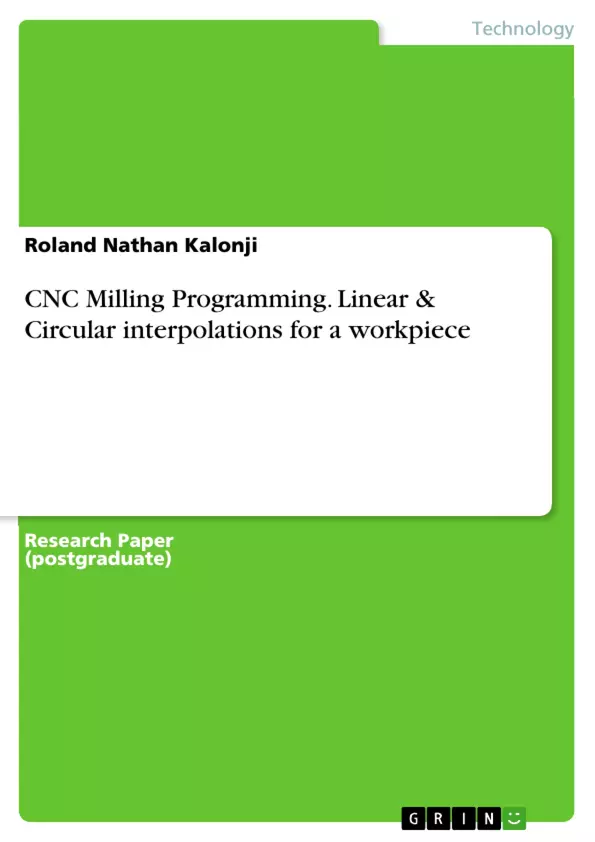A combined 3D linear and circular interpolation principle is developed on the basis of the 3D linear and circular interpolation principles. The task was to choose and design a creative item to be machined using CNC machining, which then required to write a code using CNC language. Prior to the machining process, we did a Computer Aided Design (CAD) drawing of the workpiece. The drawing was further modified with the final model drawn using Auto Desk Inventor. We used foam for our model and a 31 diameter end mill tool. The main problem that was experienced was the cutting time; the model took longer to be complete. The cutting time was affected by the complexity of the design, chosen tool size and the cutting technique. Besides, we learnt from the demonstration that the shorter the constructed code the more robust it is, using a bigger tool is more efficient in terms of saving energy and time, and that if the code is correct the CNC machine model becomes identical to that of the product Design.
Table of Contents
- 1. Background to CNC machining
- 1.1 Advantages and disadvantages of CNC machining
- 1.1.1 Advantages
- 1.1.2 Disadvantages
- 2. Motivation
- 3. Methodology
- 3.1 Procedure
- 3.1.1 Modelling
- 3.1.2 Programming
- 3.1.3 Machining
- 3.2 Precautions
- 4. G-code (10cm by 10cm)
- 5. Engineering drawing
- References
Objectives and Key Themes
This project focuses on the practical application of CNC machining, specifically using linear and circular interpolation to create a workpiece. The goal is to understand the principles behind CNC machining, the process of programming and designing for CNC, and to gain practical experience with the machine itself.
- Understanding the principles and application of CNC machining
- Exploring the use of linear and circular interpolation in CNC programming
- Developing skills in designing and programming for CNC machining
- Gaining practical experience with CNC machine operation
- Analyzing the relationship between design, programming, and production efficiency in CNC machining
Chapter Summaries
- Chapter 1: This chapter provides an introduction to CNC machining, explaining the basic components of a CNC system and the function of the G-code language. It also examines the advantages and disadvantages of CNC machining compared to traditional manufacturing methods.
- Chapter 2: This chapter outlines the motivations behind the project, emphasizing the need for practical experience with CNC machining and understanding its programming language. It also highlights the project's focus on using linear and circular interpolation techniques for a specific workpiece design.
- Chapter 3: This chapter details the methodology employed in the project, outlining the process of modelling, programming, and machining the workpiece. It also addresses safety precautions and considerations for using CNC machines.
Keywords
The central keywords for this project are CNC machining, linear interpolation, circular interpolation, G-code, workpiece design, programming, and practical application. The focus of this work is on using CNC machining techniques to create a specific workpiece, demonstrating the principles of programming and design involved in this process.
- Citar trabajo
- Roland Nathan Kalonji (Autor), 2017, CNC Milling Programming. Linear & Circular interpolations for a workpiece, Múnich, GRIN Verlag, https://www.grin.com/document/416904




